In the ever-evolving landscape of digital marketing, email remains a cornerstone of customer engagement. Two giants in this arena, HubSpot and Pardot, have long been at the forefront, offering robust solutions for businesses seeking to optimize their email marketing strategies. As companies strive to create more personalized, efficient, and effective campaigns, understanding the nuances between these platforms becomes crucial. Additionally, innovative platforms like Prism Reach are emerging, pushing the boundaries of personalized email marketing. This comprehensive comparison delves into the strengths, limitations, and unique offerings of HubSpot and Pardot, integrating hidden gem strategies and exploring how Prism Reach can further enhance your email marketing efforts.
Key Facts
- HubSpot offers an intuitive interface and integrated CRM, ideal for inbound marketing strategies.
- Pardot excels in B2B marketing with deep Salesforce integration and advanced lead nurturing capabilities.
- Both platforms provide robust automation features, but differ in their approach to content management and user experience.
HubSpot vs Pardot: Titans of Email Marketing Clash
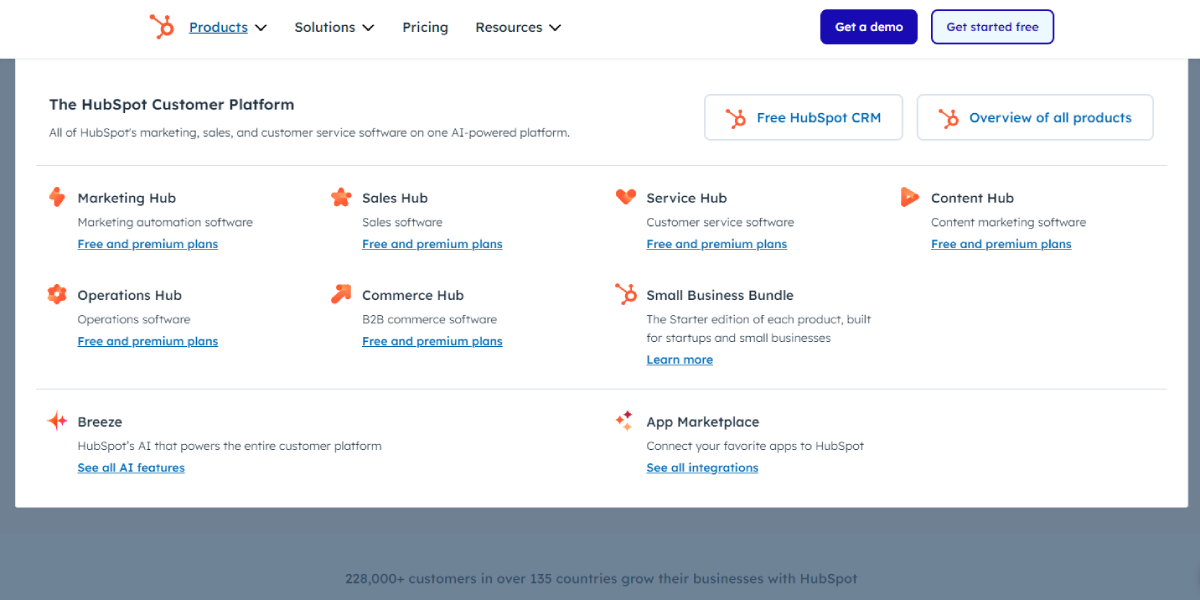
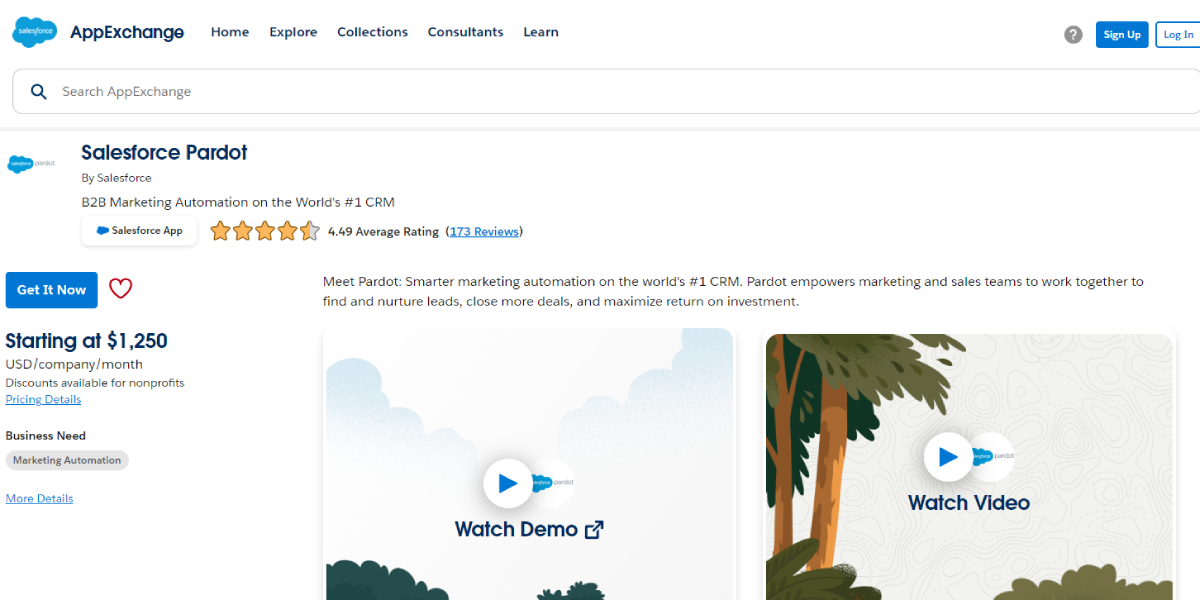
User Interface and Integration
HubSpot and Pardot offer distinct user experiences tailored to different business needs. HubSpot’s interface is renowned for its intuitive design, making it accessible to teams with varying technical skills. This user-friendliness extends to its native CRM integration, allowing for seamless data flow between sales and marketing departments.
The result is a unified platform that enhances campaign effectiveness by providing a holistic view of customer interactions. Pardot, while offering a clean interface, is more complex and specifically designed for B2B marketing. Its deep integration with Salesforce CRM is a major advantage for businesses already using Salesforce, enabling sophisticated lead management and nurturing through complex, sales-driven campaigns.
This integration allows for advanced tracking of leads and opportunities throughout the sales cycle, making it particularly suitable for enterprises with lengthy and intricate sales processes.
Automation and Analytics Capabilities
Both HubSpot and Pardot provide robust automation solutions, but with different focuses. HubSpot’s automation tools are designed to work across multiple channels, including email and social media. This multi-channel approach ensures coordinated campaign execution, allowing marketers to create cohesive customer experiences across various touchpoints. HubSpot’s automation is particularly strong in inbound marketing strategies, supporting content delivery and lead nurturing based on user behavior and preferences.
Pardot’s automation, on the other hand, is more focused on B2B lead nurturing and email campaigns. It leverages Salesforce Einstein AI to provide in-depth analytics on campaign performance and lead scoring. This AI-powered insight enables marketers to make data-driven decisions, optimizing their campaigns for better results in complex B2B sales environments. The choice between these platforms often depends on whether a business prioritizes multi-channel coordination or deep B2B analytics.
Content Management and Pricing Structures
Content creation and management capabilities significantly differ between HubSpot and Pardot. HubSpot offers a built-in content management system (CMS), which is a major advantage for businesses focused on content marketing. This integrated CMS allows for easy creation, editing, and optimization of content directly within the platform, streamlining the content marketing process. It supports various content types, from blog posts to landing pages, all optimized for SEO and user engagement.
Pardot, while offering customizable email templates, lacks the same level of integrated content management tools. Its strength lies more in email template customization and content distribution rather than comprehensive content creation.
Pricing structures also vary significantly. HubSpot’s tiered approach, including a free version for basic functionalities, makes it accessible to businesses of various sizes. As companies grow and require more advanced features, they can upgrade to higher-priced plans.
Pardot’s pricing, starting at $1,250 per month, positions it as a premium solution more suitable for larger enterprises with substantial marketing budgets.
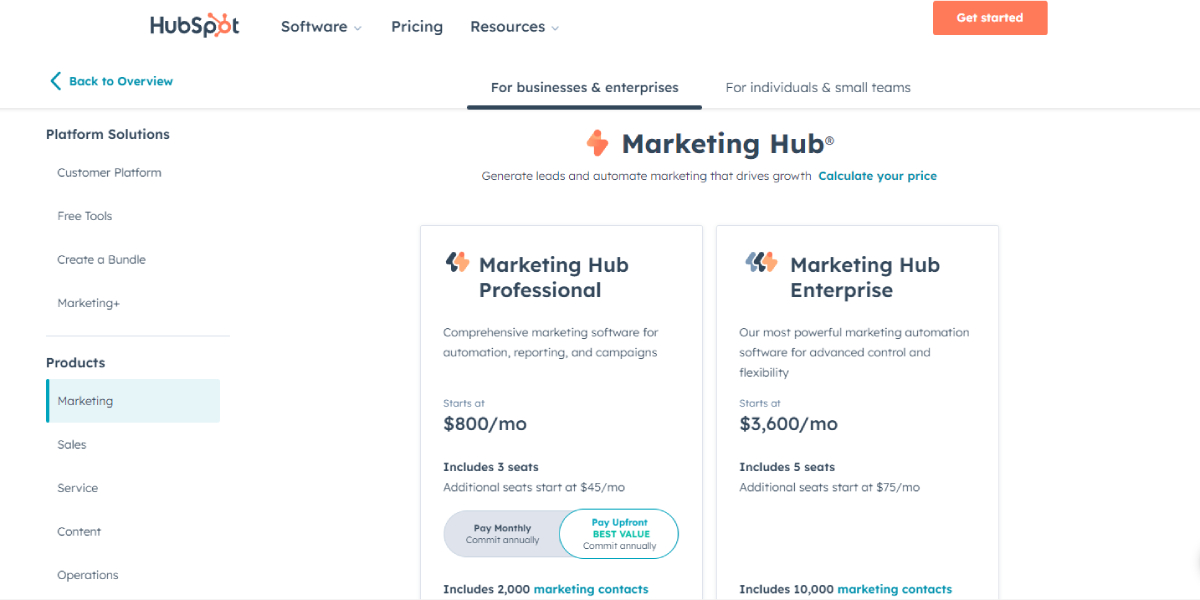
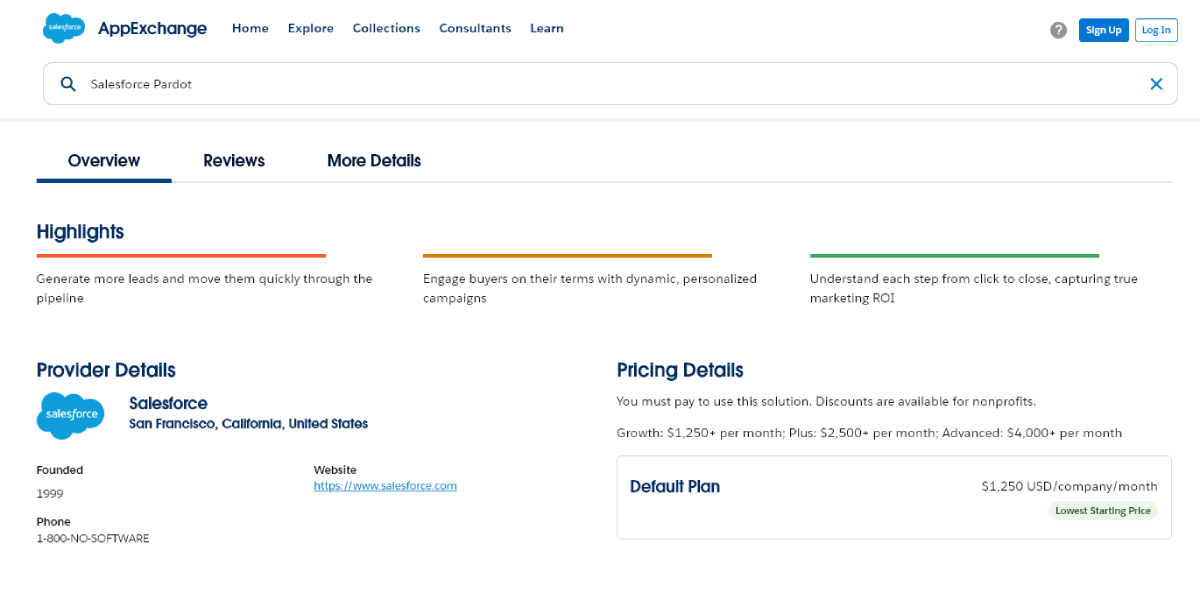
Hidden Gem Strategies for HubSpot vs Pardot
Beyond the core features, both HubSpot and Pardot offer unique strategies that can significantly enhance your email marketing efforts. Here are five hidden gem strategies that leverage the unique features of both platforms:
1. Utilize HubSpot’s Scheduled Workflows
Many users are unaware that HubSpot allows you to set up scheduled workflows that can trigger at optimal times. This feature is particularly useful for time-sensitive campaigns, ensuring your marketing efforts align perfectly with key dates or events, enhancing engagement and effectiveness.
2. Leverage Pardot’s Form Handlers
Pardot’s form handlers allow you to send data directly to Pardot via a URL with a query string. This feature is often overlooked but can simplify the integration of forms created with third-party tools (like Gravity Forms) into your Pardot campaigns, enabling more customization and tracking.
3. Dynamic Content in HubSpot
HubSpot’s dynamic content feature can personalize marketing messages based on user behavior or demographics. This capability is underutilized; by creating tailored experiences, businesses can significantly increase engagement and conversion rates.
4. Pardot’s Engagement Studio
While many users focus on basic automation, Pardot’s Engagement Studio allows for complex drip campaigns that adapt based on user interactions. This feature enables marketers to create highly personalized nurturing paths, which can lead to improved lead conversion.
5. Custom Lead Scoring in HubSpot
HubSpot allows you to create custom lead scoring properties that can trigger workflows based on a contact’s score. This flexibility is often overlooked but can help prioritize leads effectively and ensure that sales teams focus on the most promising prospects.
6. Utilize Adaptive Testing in HubSpot
Unlike traditional A/B testing, HubSpot’s adaptive testing lets you test multiple variations of a page simultaneously, automatically adjusting traffic distribution based on performance. This feature helps identify the best-performing content more efficiently.
7. Integrate Google Analytics with Pardot
By integrating Google Analytics with Pardot, you can gain deeper insights into how email campaigns drive traffic and conversions. This connection allows for better optimization of marketing strategies based on actual user behavior.
8. Content Partitioning in HubSpot
For larger teams, HubSpot’s content partitioning feature allows administrators to restrict access to certain content based on team assignments. This ensures that only relevant team members can edit or view specific assets, improving workflow efficiency.
9. Use Predictive Lead Scoring in Pardot
Pardot’s predictive lead scoring uses AI to assess which leads are most likely to convert based on historical data. This feature is powerful yet underutilized; it helps prioritize outreach efforts effectively and streamline the sales process.
10. Engage with Community Resources
Both platforms have vibrant user communities where tips and best practices are shared regularly. Engaging with these communities can reveal lesser-known strategies and hacks that can enhance your use of either platform significantly.
Innovative Solutions by Prism Reach
While HubSpot and Pardot offer solid email marketing solutions, innovative platforms like Prism Reach are pushing the boundaries of what’s possible in personalized email marketing. Prism Reach leverages advanced AI technology to offer deep personalization that goes beyond traditional segmentation methods.
Upgrade Your Email Marketing with AI Personalization!
Key Benefits of Prism Reach:
- Increased Engagement: Publishers report up to 40% higher engagement rates due to the personalized nature of the content.
- Higher Revenue: Tailored advertising and efficient content targeting lead to higher monetization rates for published newsletters.
- Improved Productivity: Automation and AI-driven insights significantly reduce the time required to create and manage campaigns.
Prism Reach’s core functionality revolves around its proprietary AI technology, which clusters website content and social media posts into relevant categories. This AI uses a variety of data points to create detailed user avatars, enabling personalized newsletter content that incorporates factors such as location, engagement history, and predicted interests. The system’s ability to analyze vast amounts of data allows for highly targeted marketing strategies.
Hidden Gem: Take Advantage of Mailchimp’s Pre-built Automation Templates
While many users create automation from scratch, HubSpot offers pre-built templates for common scenarios (like welcome emails or re-engagement campaigns). Using these templates saves time and ensures best practices are followed, allowing marketers to implement effective automation quickly and efficiently.
Hidden Gem: Engage with Pardot’s Community Support
Pardot has a robust support community that provides valuable insights and tips from experienced users. Engaging with this community can uncover lesser-known strategies and solutions to common challenges, enhancing your email marketing efforts through shared knowledge and collective experience.

Hidden Gem: Utilize A/B Testing for Subject Lines in Both Platforms
While A/B testing is common knowledge, many users do not frequently test subject lines. Regularly experimenting with different subject lines can yield significant improvements in open rates, making it a simple yet effective strategy. Both HubSpot and Pardot offer A/B testing tools that can help identify the most effective subject lines for your audience.
Hidden Gem: Create Custom Opt-in Forms with HubSpot
HubSpot allows for customizable opt-in forms that can be integrated into websites and social media platforms. Using these forms strategically can enhance subscriber acquisition efforts by aligning them closely with branding and messaging, resulting in higher conversion rates and a more engaged subscriber base.
Hidden Gem: Monitor Engagement Metrics Closely in Pardot
Users often focus solely on open rates; however, monitoring engagement metrics like click-through rates and conversions provides a more comprehensive view of campaign effectiveness. This insight allows for timely adjustments to strategies that may not be performing as expected, ensuring continuous improvement and optimal campaign performance.
Innovative Features and Future Prospects
Prism Reach stands out with its AI-powered personalization capabilities. By transforming how publishers and content creators engage with their audiences, Prism Reach uses sophisticated AI algorithms to customize every aspect of newsletters based on subscriber behavior and preferences. This level of personalization not only enhances user experience but also drives better marketing outcomes.
Looking ahead, Prism Reach aims to expand its technology into the eCommerce sector and explore new ways to leverage AI for broader marketing applications. The company is committed to continuous improvement of its AI algorithms, ensuring that its solutions remain at the cutting edge of technology and marketing innovation.
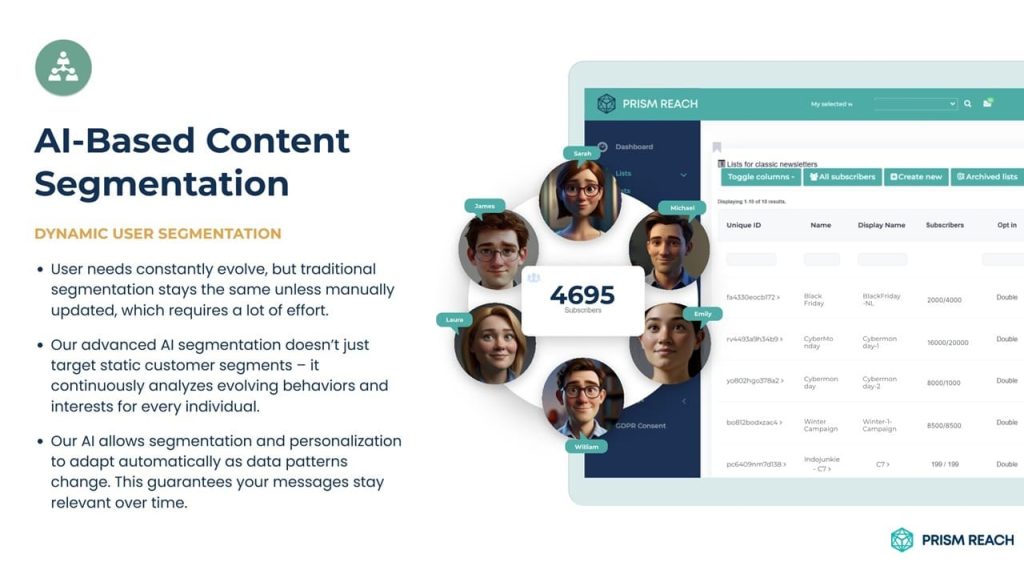
Conclusion
In the HubSpot vs Pardot debate, the choice ultimately depends on specific business needs. HubSpot shines for its user-friendly interface and comprehensive inbound marketing capabilities, making it ideal for businesses of various sizes focusing on content-driven strategies. Pardot, with its Salesforce integration and B2B focus, is better suited for larger enterprises with complex sales cycles.
However, as the email marketing landscape evolves, innovative solutions like Prism Reach highlight the potential for AI-driven personalization to revolutionize how businesses engage with their audiences through email. For those seeking cutting-edge personalization and efficiency in their email marketing efforts, exploring such AI-powered alternatives may offer significant advantages over traditional platforms.
Ultimately, the choice between HubSpot, Pardot, or newer alternatives like Prism Reach depends on your specific business needs, budget, and long-term marketing goals. By carefully considering the strengths and limitations of each platform, you can select the tool that best aligns with your email marketing strategy and helps you build stronger connections with your audience.